About two years into launching my vintage brand, I decided I wanted to stop using the word “reseller” to describe myself or my business. Sure, it had become kind of a negative word. But it also didn’t even feel like the right word.
Almost every business with a physical product involves some form of resale: hardware stores, florists, candy shops, book stores. By definition, a reseller is “anyone who buys a product with the objective of selling them later at a higher price.” But for the last few years, colloquially at least, a reseller is someone who deals specifically in secondhand items. And it’s often used as an insult. How did we get here?

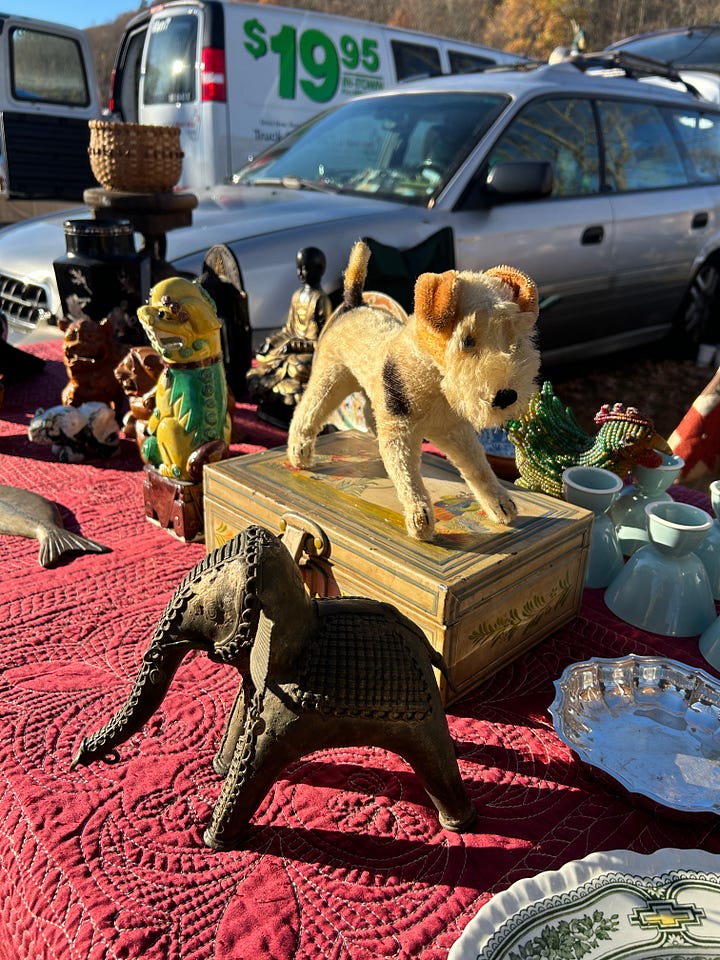

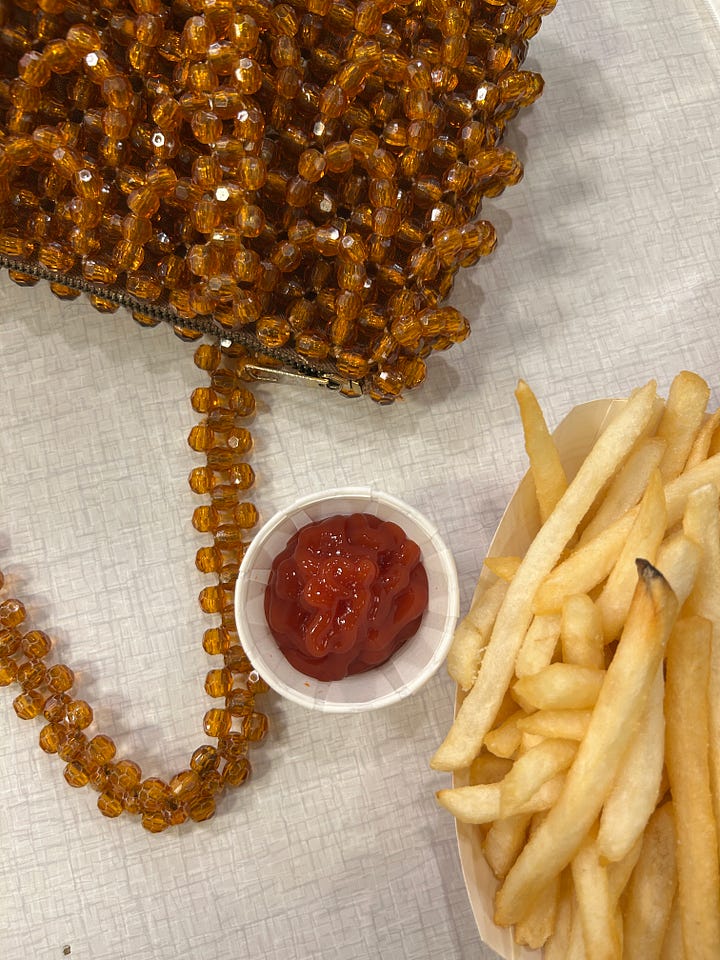
Resale, at its worst, adds no inherent value. I can actually only think of one example of this kind of resale: limited release items like concert tickets or collectibles (like sneakers). In these very specific scenarios, people are exploiting bad systems to hoard something in very high demand, and selling for a huge markup without increasing the inherent value of the item in any way. These days, this often involves the use of bots or algorithms to snatch up goods faster than humanly possible. Most people find this kind of resale to be morally objectionable, and for good reason. I’d love to see regulations or restrictions put in place for this kind of predatory “resale.”
However, in almost every other scenario, resellers are adding value. Most resellers increase worth simply by offering a variety of goods in one location (physical or digital), with amenities. Grocery stores aren’t altering most of the food they’re receiving, book stores aren’t repairing or cleaning their books. But the stores are merchandised, convenient, accessible, and hopefully have helpful and friendly staff. Shoppers understand that a pet store has overhead costs, and that they are charging more for dog food and chew toys than what they pay to buy them.
But when it comes to secondhand resale, that understanding seems to go out the window. I’ve spent a lot of time thinking about the unique ire that secondhand resale seems to provoke, and I think it comes down to three main issues: access, value, and change.
Access
Secondhand goods come from a huge variety of places, many of which are accessible to regular consumers. Thrift stores, estate sales, flea markets, and online platforms are open to the public, and I think this accessibility creates a sense of entitlement. Regular consumers don’t have access to goods at wholesale pricing, or to specialty products that can only be purchased directly from the manufacturer. They do have access to secondhand.
Similar to how people often treat art fine art, there’s this idea that understanding how something was made or found means you could easily make or find the same thing. Seeing the chaotic splatters of a Jackson Pollock in the MoMa inevitably leads a certain kind of person to a misguided conclusion: I could make that. They fail to see beyond paint, canvas, and gravity.

When it comes to fashion resale, the “I could find that too” mentality disregards time, labor, and expertise for a hypothetical scenario in which you were in the same exact place at the same exact time and picked up the same exact item. It also disregards the fact that many secondhand sellers find goods through sources that are not accessible to the general public.
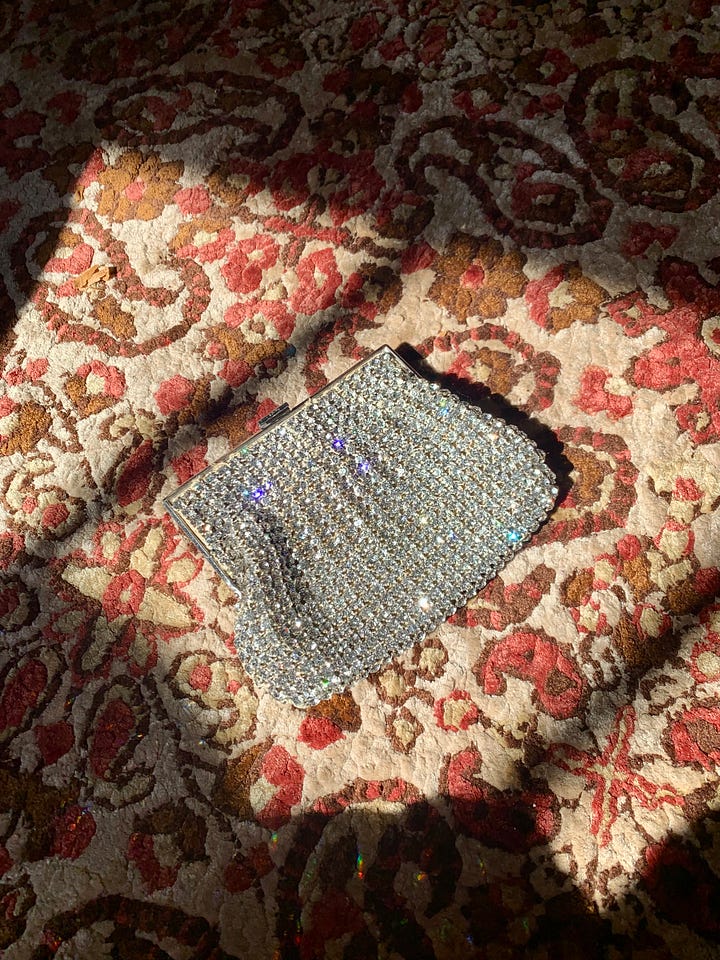
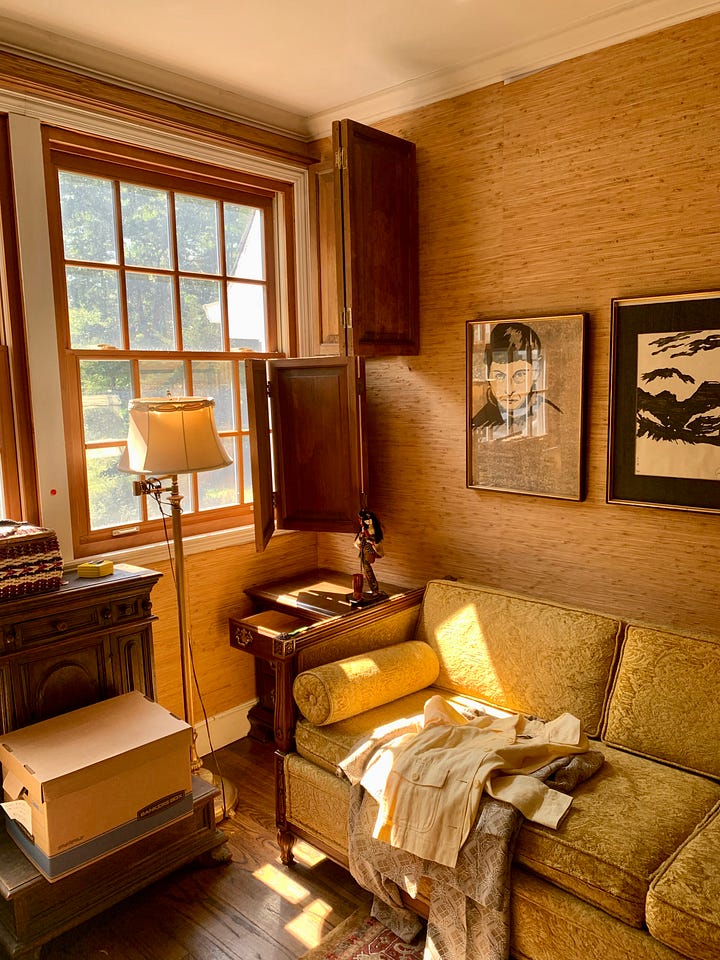
The reality is that because people can often see or guess the exact prices that secondhand items could be purchased for, and it’s easy to make comparisons. The prices of wholesale goods aren’t publicly available to the average consumer, so people don’t realize that the markups and margins for regular goods are often much, much higher than that for secondhand goods.
Value
Connected to access is value. There is high demand and desirability for certain secondhand items, and the fact that they’re often available to the public creates a sense of scarcity and competition. I think it’s easy to forget that market values affect sellers on both ends - sure, they can sell certain pieces for more when their value rises. But it often means that they’re now paying more to acquire that item in the first place.
Beyond the constantly fluctuating market value of an item, we should also factor in added value. And almost every single secondhand seller I know is adding a lot of inherent value to the items they’re selling. The proper resale of apparel and accessories is a time consuming process that involves labor, expertise, and so many different skills! Here are just a few of the ways that items become more valuable after they’ve passed through my hands:
Restoration. I take on the laborious task of removing stains, banishing bad smells, replacing broken zippers, mending drooping hems, and so much more. Many of the items I handle require a professional hand, and need expertise or money beyond just regular laundry.
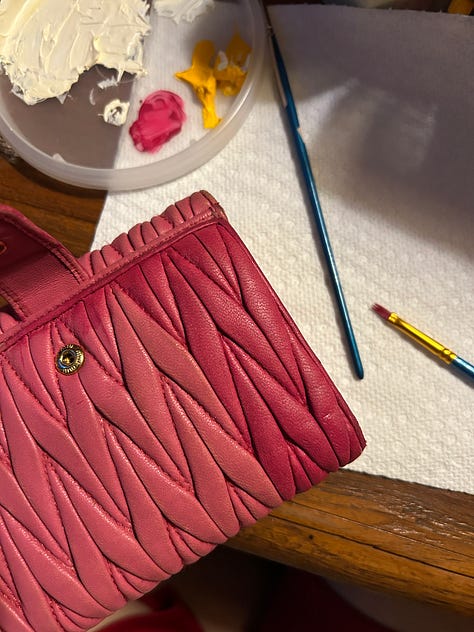
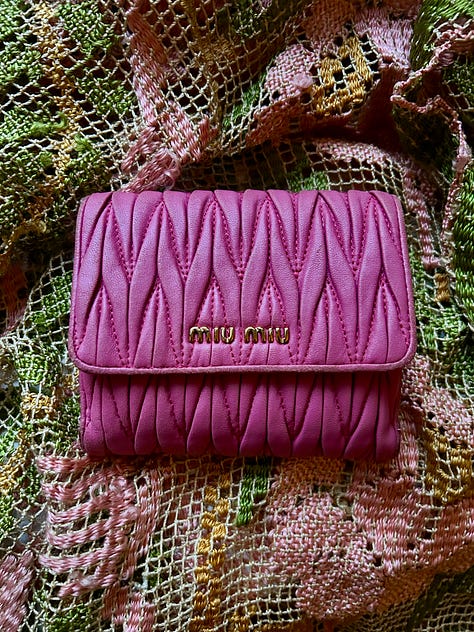
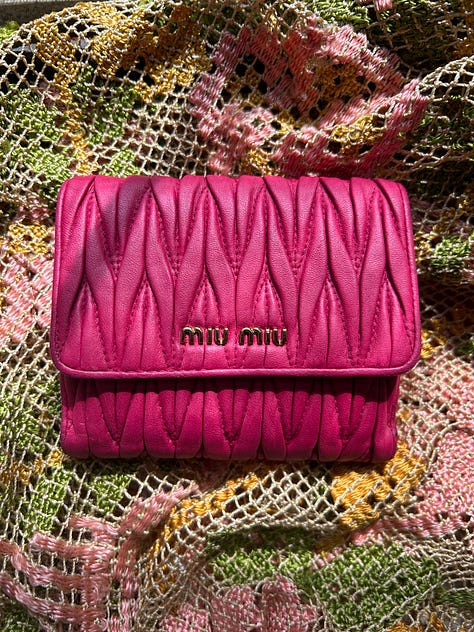
Restoration of the week: 3+ hours spent hand painting a very worn and faded Miu Miu wallet (the color difference looks a bit dramatic because of the lighting) Curation. I’m spotlighting the potential for a piece that could be otherwise hard to see in another scenario. Many of the pieces I sell require a trained eye to pick!
Information. Almost everything I sell has a tag (or thorough copy, for online listings) that includes an accurate vintage era, sizing & measurements, and other details. Without proper knowledge and research, lots of the information I provide is inaccessible to many shoppers on their own.
Location. I live and work in New York City, where everything is expensive. If you’re shopping with me at a vintage event or at Seven Wonders Collective, you’re having a special shopping experience. Buying vintage in a beautiful space in a great location sold by knowledgeable and excited sellers is undeniably valuable. Lots of my inventory also comes from undesirable or inaccessible locations - shoppers are physically unable to access many of the places I source from, so the only way to bring them to a location you can access is through me!
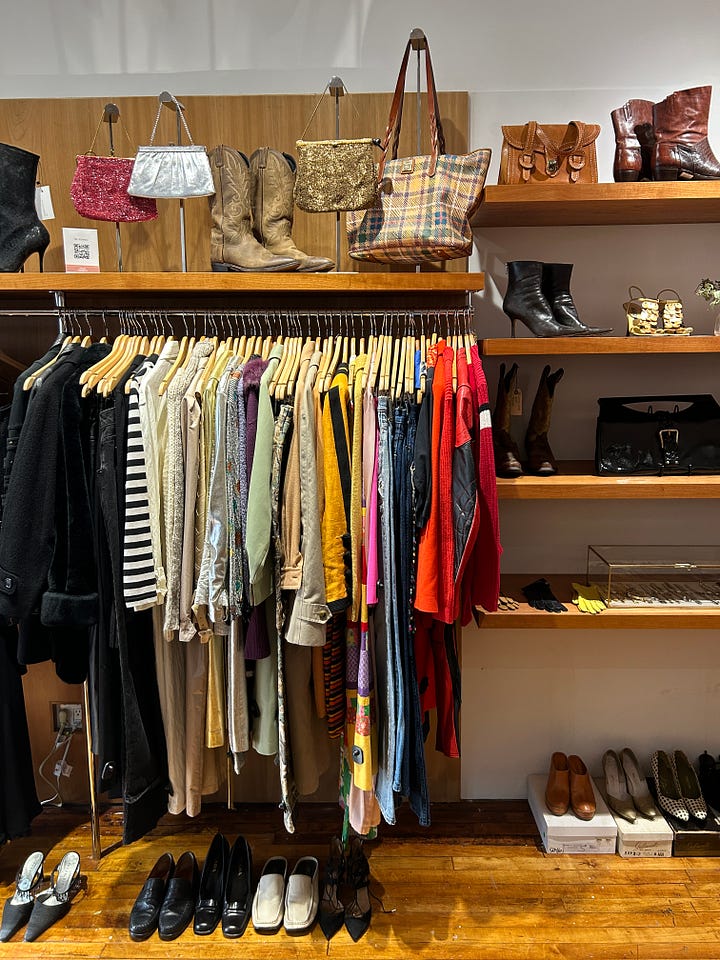

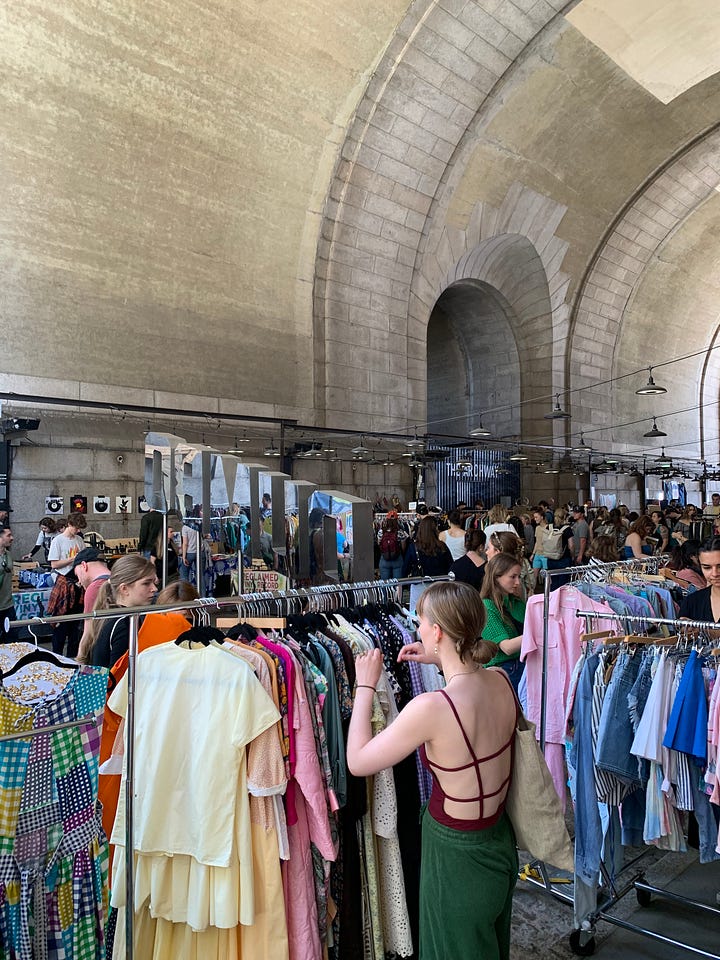
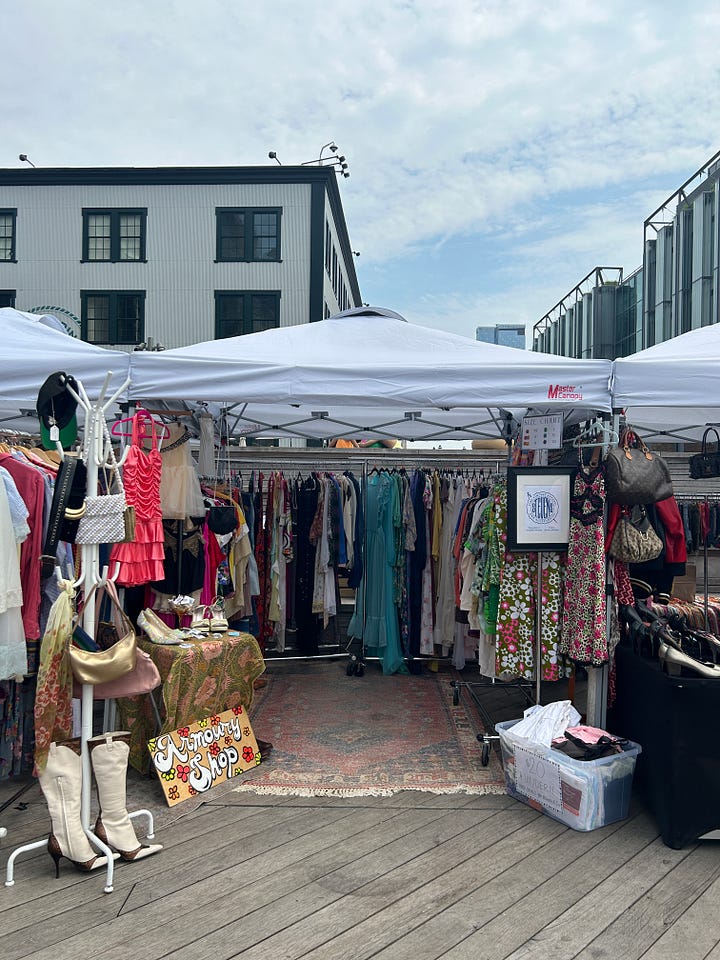
Selling vintage in beautiful, interesting locations costs a lot and takes a lot of work! My pieces are not strip mall thrift store prices because I'm not a thrift store in a strip mall...
Change
Despite the unending tumultuous change of the world in recent years, adapting to change really hasn’t gotten any easier. There’s an endless list of bad changes that people complain about daily, the increasing prices of life among them. And the rising costs of rent, food, healthcare, transportation, and basic goods directly affects the rising prices of secondhand goods. The reality is that we’re no longer living in a world where secondhand clothing can be sold for $2, even at thrift stores. Thrift store prices haven’t gone up just because of resellers. Thrift store prices have gone up because the price of literally everything else has gone up.
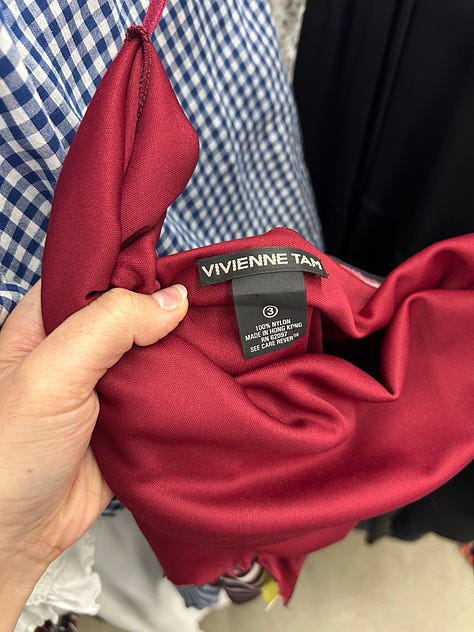
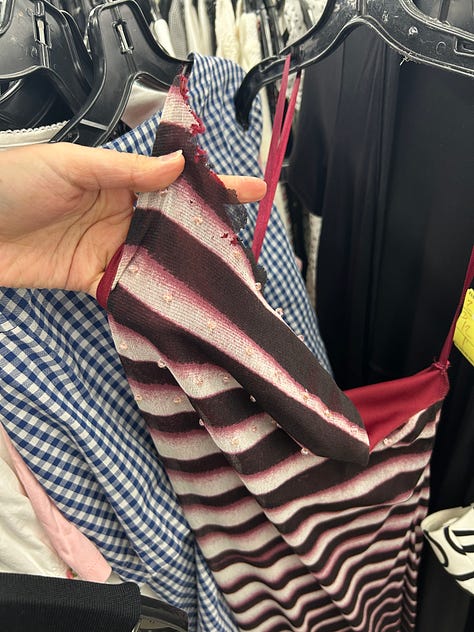

When it comes to vintage specifically, the further away we get from an era, the more rare the pieces become. I’ve heard plenty of people lament the days of finding plentiful 70’s pieces in the 90’s. With only a 20 year gap, it makes sense that 70’s pieces would still be lingering in people’s closets and basements in the 90’s, ready to dropped off at thrift stores and consignment shops. But today? The 1970’s was 50 years ago. The sad reality is that many vintage items never even made it to the current day. Thousands of perfectly good pieces have gone to the landfill, or (hopefully) have been worn beyond repair. That means that whatever remains of a finite and dwindling resource will only continue to go up in value.

Another major change is the overall quality of the secondhand goods available. The secondhand market is a direct reflection of the firsthand market, and things there are worse than ever. The market is being flooded with low-quality goods, and the overall selection is bleak because the products people are buying new (and subsequently ditching) are bleak. The fashion landscape has completely transformed in the last 30 years thanks to globalization, fast fashion, and online shopping.
People want someone to blame for thrift stores packed with Shein, and it’s a lot easier to rant at a Depop seller in their TikTok comment section than it is to wrap your head around the real culprits: the toxic fashion industry and the unhealthy consumer habits they’ve sold us. Things are changing, fast, and in a way that’s really scary. But individual actions are never, ever going to stack up to the enormous harm coming from corporations, governments, and industrial systems.

I think it really sucks that everyone can’t afford the things they want. But the path to a world in which they can isn’t paved in the abandoned businesses of former resellers. In fact, the only way things will get better is if there are more resellers. Hot take, I know! But the reality is that we’re drowning in stuff. The planet is absolutely overloaded with all of the things we’ve already produced, sold, and used. The only way to tackle the results of our overconsumption is an all-hands-on-deck approach. Everyone needs to be buying less, and buying a lot less new. And what better way to spread the secondhand first lifestyle than by making it easier, more accessible, cooler, and more fun?
Okay, So You’re Not a “Reseller”
After a lot of thought, I’ve decided that I most align with describing myself as a “vintage dealer.” It’s a term often used in the art world - fine art dealers, antiques dealers. I personally view fashion as an art form, and I treat my vintage inventory like art. Each piece is a special creation, a collaborative effort between farmers, artisans, knitters, designers, and the endless other laborers and their respective art forms.
Describing myself as and my business as vintage dealing better encompasses the scope of my work. It implies a level of expertise, and provides a broader definition that includes (but isn’t limited to!) resale. Yes, I am a reseller. But I’m also a stylist, a seamstress, a laundress, a retail worker, a copywriter, a social media creator, and so much more. Reseller doesn’t even begin to cover it. And if you’re in my line of business, I bet reseller doesn’t accurately describe your job either.
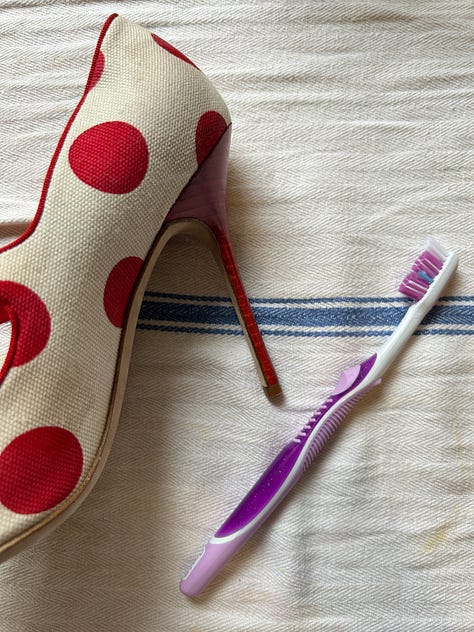
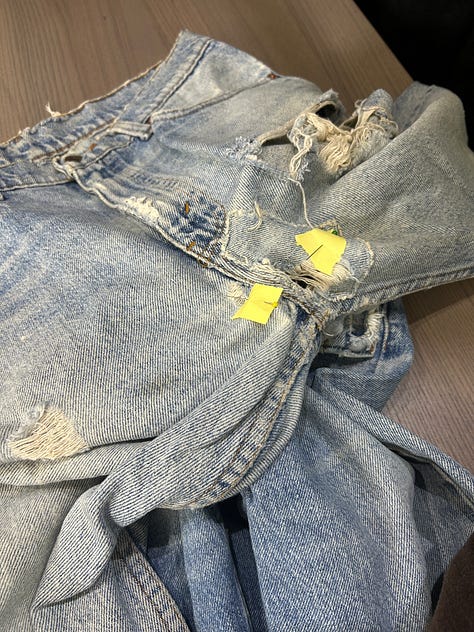
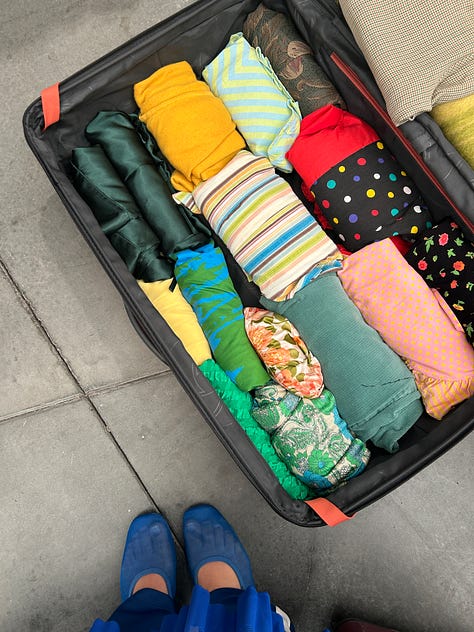
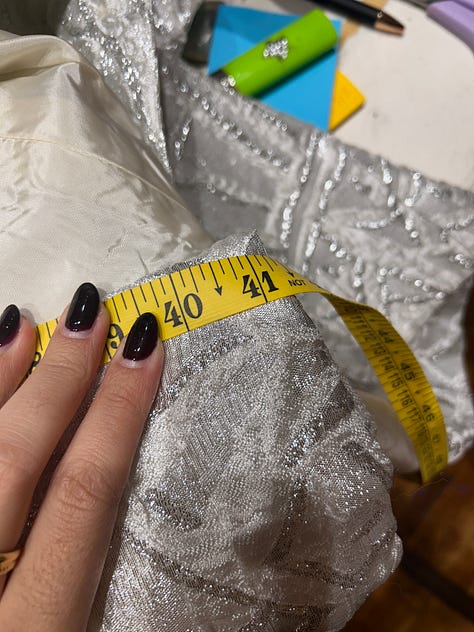
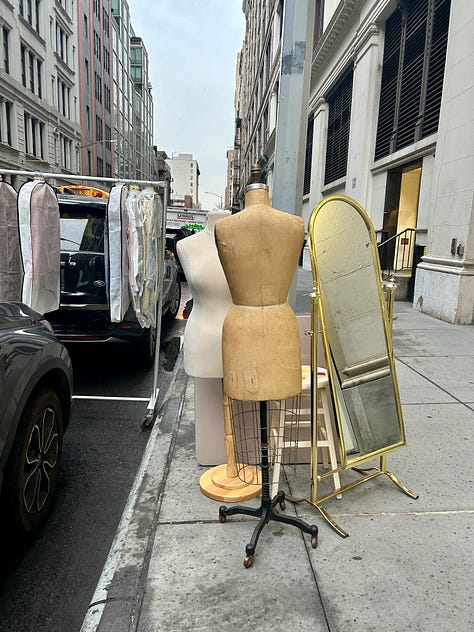

If you’re interested in this topic, you’d probably love the very extensive series I did with Amanda of Clotheshorse in 2023. We collaborated on tackling all of the crazy “anti-resale” rhetoric we both kept seeing online, and our planned one episode quickly turned into a four part series. We did a lot of research to break down all of the myths floating around online, and did prove that they are, indeed, all myths! If you’re here reading my work, you’re highly likely to be team pro-resale. However, it can often be hard to articulate good arguments against some of the most common talking points. Our episodes provide stats, firsthand accounts, and much more to help you confidently defend a job that’s truly essential to the well being of our planet.
You can listen to all of the episodes wherever you listen to podcasts, including on YouTube! I’ve linked to the Clotheshorse site for more info & listening links, below.





Lovely and thorough article, Alex! Appreciate your thoughts and words and for sharing with us!!